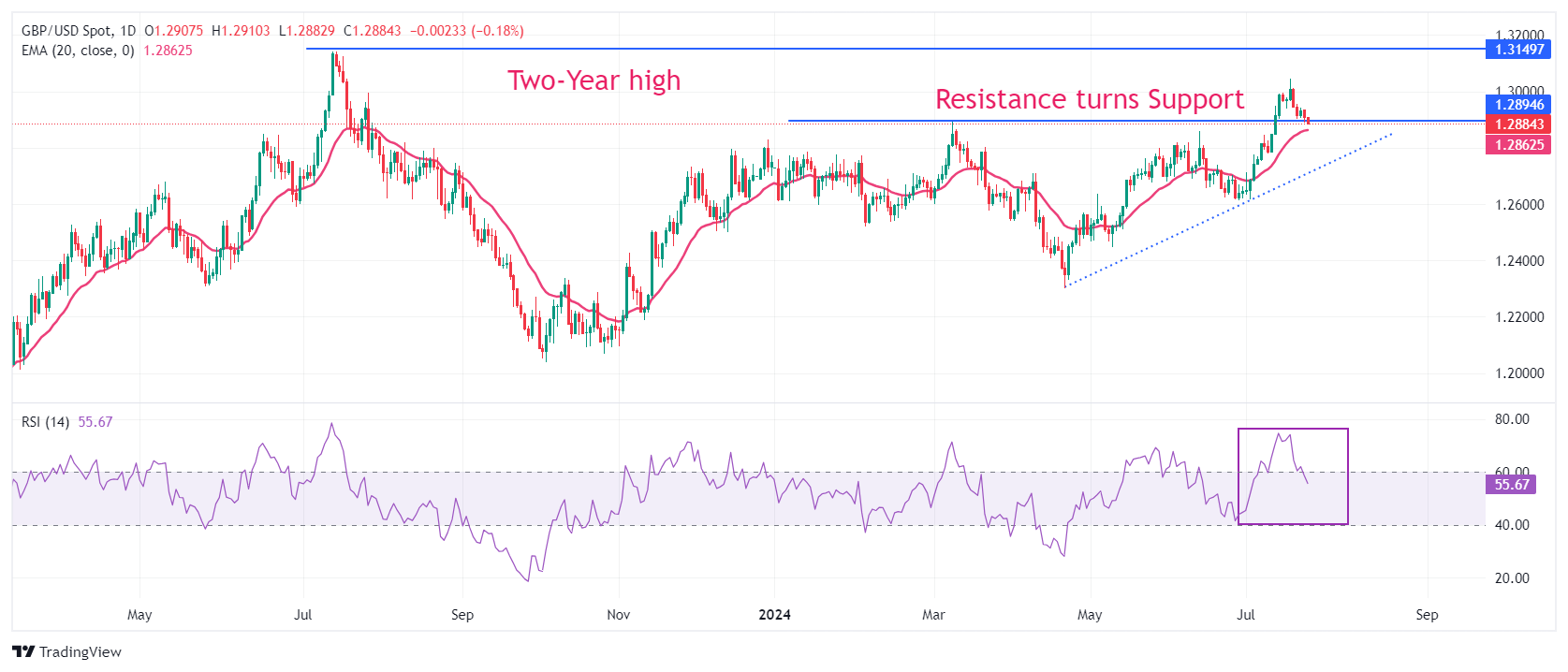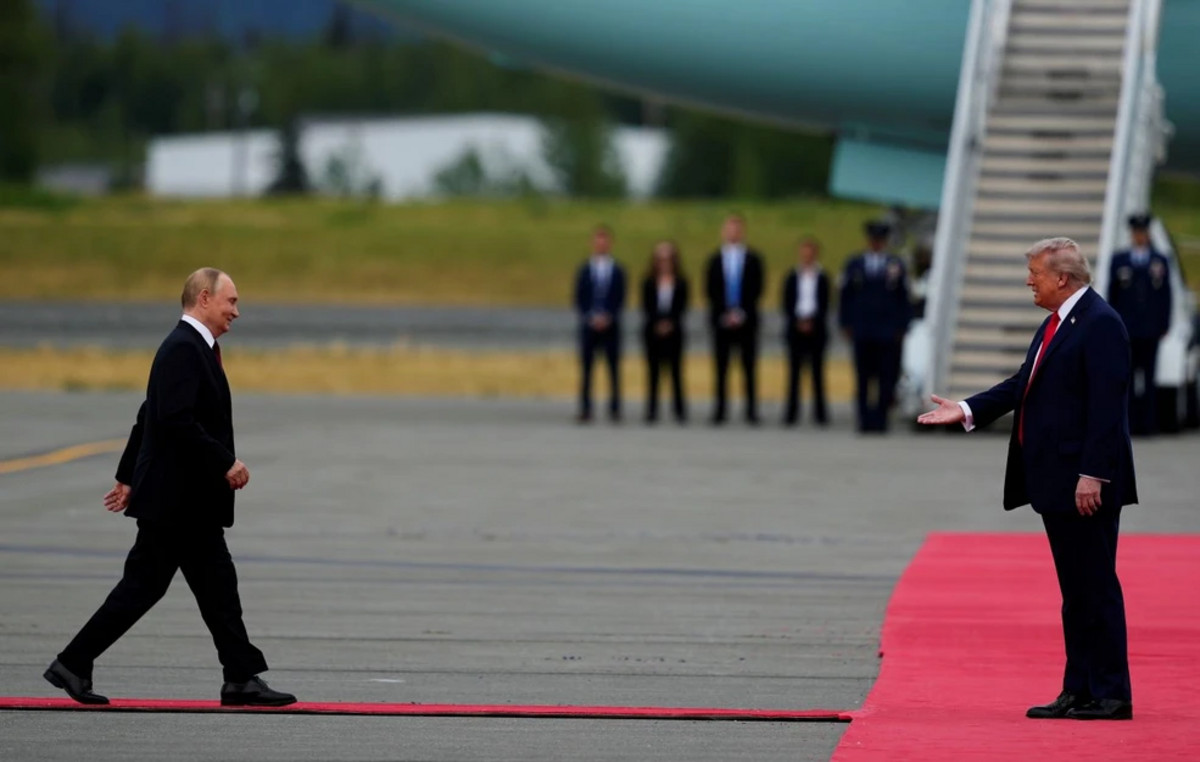- Sterling falls amid firm BoE rate cut prospects.
- Investors are awaiting preliminary US/UK S&P Global PMIs for July.
- The Fed is expected to pivot toward policy normalization in September.
The British Pound (GBP) is weaker against its major peers, excluding Asia-Pacific currencies, in the London session on Wednesday. The British currency remains on the defensive amid growing speculation that the Bank of England (BoE) will start cutting interest rates in August.
Market experts see the UK economy struggling to cooperate with the BoE’s high interest rates. The consequences of a restrictive monetary policy stance are clearly visible in household spending, as UK retail sales, a key measure of consumer spending that drives inflationary pressures, contracted at a faster-than-expected pace in June.
Meanwhile, BoE officials are holding off on backing rate cuts due to high inflation in the services sector. UK services inflation rose steadily by 5.7% in June.
With preliminary S&P Global/CIPS UK Purchasing Managers’ Index (PMI) data for July in focus, investors will be looking for fresh clues on economic health. The composite PMI is estimated to have expanded at a higher pace of 52.6 from the previous release of 52.3 due to a surge in activities in the manufacturing and services sectors. UK employers’ confidence in the economic outlook has also improved as UK Prime Minister Keir Starmer’s victory with an outright majority has brought political stability.
Daily Market Wrap: Sterling underperforms against major peers
- The British Pound weakens to near 1.2880 against the US Dollar (USD) during European trading hours on Wednesday. The GBP/USD pair extends its correction below 1.2900 amid rising risk aversion. Meanwhile, the US Dollar clings to gains ahead of a slew of United States (US) economic data. The Dollar Index (DXY), which tracks the value of the Dollar against six major currencies, is hovering around a weekly high around 104.50.
- In Wednesday’s session, investors will also focus on the preliminary US S&P Global PMI data for July, due out at 13:45 GMT. The report is expected to show that the manufacturing PMI expanded at a nominal pace of 51.7 from June’s reading of 51.6. The services PMI, a measure of activities in the service sector, is estimated to have expanded at a slower pace of 54.4 from the previous release of 55.3. The economic data will convey the current economic health.
- This week, the main triggers for the US Dollar will be the preliminary annualized Gross Domestic Product (GDP) for the second quarter and the Personal Consumption Expenditure (PCE) Price Index data for June, which will be released on Thursday and Friday, respectively. The US economy is estimated to have grown by 1.9% from the previous release of 1.4%.
- Investors will be focusing on core PCE inflation, the Federal Reserve’s (Fed’s) preferred inflation measure, for fresh clues on when the central bank will start cutting interest rates. Financial markets are currently expecting the Fed to start lowering its key interest rates in September.
- Meanwhile, investors are looking for further developments regarding the US presidential election in November. Market experts see Donald Trump winning the election despite the Democrats nominating Vice President Kamala Harris as their leader.
Technical Analysis: British Pound Falls Below 1.2900
The British Pound falls below the crucial support of 1.2900 against the US Dollar. The GBP/USD pair falls close to the horizontal support drawn from the March 8 high near 1.2900, which used to be a resistance for the British Pound bulls. The Cable has fallen close to the 20-day exponential moving average (EMA), which is trading around 1.2860.
The 14-day Relative Strength Index (RSI) is back within the 40.00-60.00 range, suggesting that the bullish momentum has faded. However, the bullish bias remains intact.
On the upside, a two-year high near 1.3140 will be a key resistance zone for the pair. On the other hand, the ascending trend line from the April 22 low will act as an important support zone around 1.2750.
The British Pound FAQs
The Pound Sterling (GBP) is the oldest currency in the world (886 AD) and the official currency of the United Kingdom. It is the fourth most traded currency unit in the world, accounting for 12% of all transactions and an average of $630 billion a day, as of 2022.
Its key currency pairs are GBP/USD, also known as the “Cable,” which accounts for 11% of the forex market, GBP/JPY, or the “Dragon” as it is known to traders (3%), and EUR/GBP (2%). The British Pound is issued by the Bank of England (BoE).
The most important factor influencing the value of the British Pound is the monetary policy decided by the Bank of England. The Bank of England bases its decisions on achieving its main objective of “price stability”, i.e. a stable inflation rate of around 2%. Its main tool for achieving this is the adjustment of interest rates.
When inflation is too high, the Bank of England tries to contain it by raising interest rates, making credit more expensive for individuals and businesses. This is generally positive for the GBP, as higher interest rates make the UK a more attractive place for global investors to park their money.
When inflation is too low, it is a sign that economic growth is slowing. In this scenario, the BoE will consider lowering interest rates to make credit cheaper, so that companies borrow more to invest in growth-generating projects.
The data released gauges the health of the economy and can influence the value of the Pound. Indicators such as GDP, manufacturing and services PMIs, and employment can influence the direction of the Pound.
A strong economy is good for the British Pound. Not only does it attract more foreign investment, but it may encourage the Bank of England to raise interest rates, which will directly strengthen the British Pound. Conversely, if economic data is weak, the British Pound is likely to fall.
Another significant indicator for the pound is the trade balance. This indicator measures the difference between what a country earns from its exports and what it spends on imports during a given period.
If a country produces highly sought-after exports, its currency will benefit exclusively from the additional demand created by foreign buyers who wish to purchase these goods. Therefore, a positive net trade balance strengthens a currency and vice versa for a negative balance.
Source: Fx Street
I am Joshua Winder, a senior-level journalist and editor at World Stock Market. I specialize in covering news related to the stock market and economic trends. With more than 8 years of experience in this field, I have become an expert in financial reporting.








